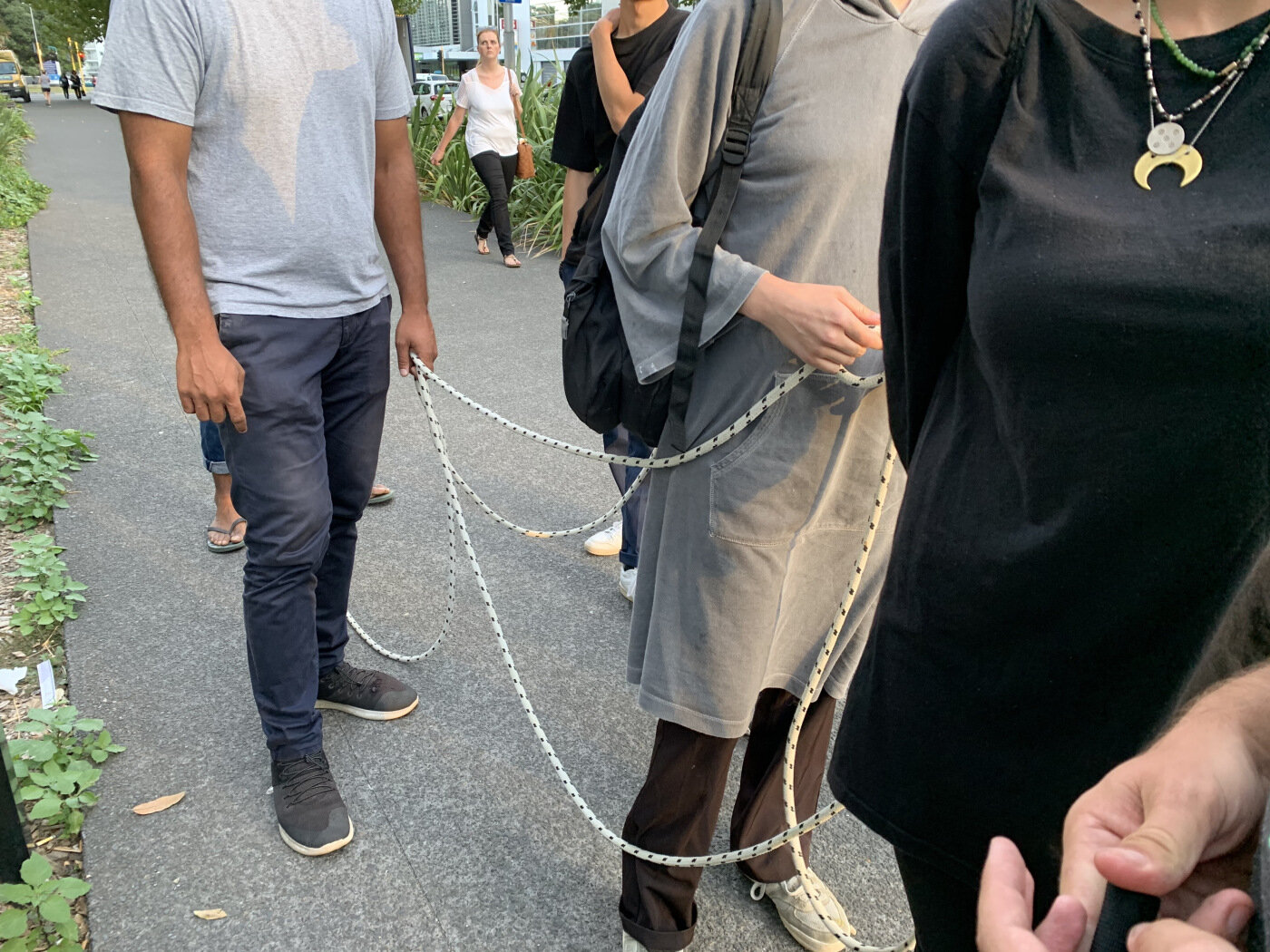Satchi&Satchi&Satchi / 2b, 93 The Strand / www.satchiandsatchiandsatchi.com / 12th – 30th March 2020.
A Walk To Opoututeka
(The gallery exhibition was canceled from the 15th March 2020 due to local Covid19 pandemic lockdowns.)
Installed photographs.
Gallery installation.
Documentation of the walk to Opoututeka.
Walking, the term holds a variety of descriptive connotations, a physical action allowing movement from one place to the next. It can be a way to enter or exit a place, enable or disable a state of mind, opening up the self to become the other and visa versa.
In 2018 artist, Bibi Calderaro wrote on walking as,“…an ontological shifter, an intentional practice of walking, a medium that maximizes the conditions of possibility by which our subjectivities may be transformed from dualistic perceptions and conceptions to embodied forms of understanding that are non-dualistic.” Poet Francis Ponge describes water in his 1942 poem ‘Water,’ as matter that continually changes, readily responding to surrounding forces, but exclusively governed by gravity.
“…Meanwhile, the sun and moon, jealous of the exclusive influence gravity has over water,
try to do the very same thing, especially whenever they find it spread over large span, or particularly when in small pools right after the rain, when it is in no position to offer any resistance — especially to the sun, which takes this opportunity to put water in the so-called water cycle, where the poor thing runs in circles like in a squirrel wheel.
Water escapes me, pouring through my fingers. And it’s not all that clean when you think of it. Water is not as clean as a frog or a lizard, leaving plenty of traces and sometimes even stains; anyway, you have to wipe your hands when they are wet. And so, it escapes me, that is I fail to grasp it. If there is an ideology of water, it is expressed in these terms: water escapes me – escapes a clear definition, and leaves a certain residue in me and on paper, amorphous like a stain. But it is affected by the slightest change of gradient – it runs down, skipping steps – joyful and puerile in its obedience, when I call it back, tilting the surface toward me.”
At 18:30 we will begin walking along Auckland’s original shoreline, the line where the sea once met the land, described as the ‘1840 Mean High Water Mark,’ plotted by Aranne Donald in 1840. Walking in the direction of the setting sun, in opposition to the tilting of the earth, we aim to arrive at Opoututeka by approximately 21:00 hrs.
How might we collectively experience the peripheries that are now enveloped by progress, development and shifting thought. The stories that once defined this shoreline exist in silence, hidden within objects. How might we respond to possible perceptions of this walk when time continues, readily influencing the constant shifting water?
Works:
1. A Starting Point. Furniture Gallery 2b, 93 The Strand, Parnell.
Two digitally printed photographs.
2. A Line From Maggie.
10mm Dyneemad/polyester line with stainless steel thimble.
3. A Possible End Point. Opoututeka.
One digitally printed photograph.
4. A Walk to Opoututeka on 12-3-2020, from 18:30 to approximately 21:00 hrs. (A collective experience of walking the ‘1840 Mean High Water Mark,’ without a specified/guaranteed outcome.)
Performance and documentation, walking for approximately 2.5 hours, in a line with A Line From Maggie and an A3 photocopied map of markers in a folder.
5. A Gift.
Text on call card.













